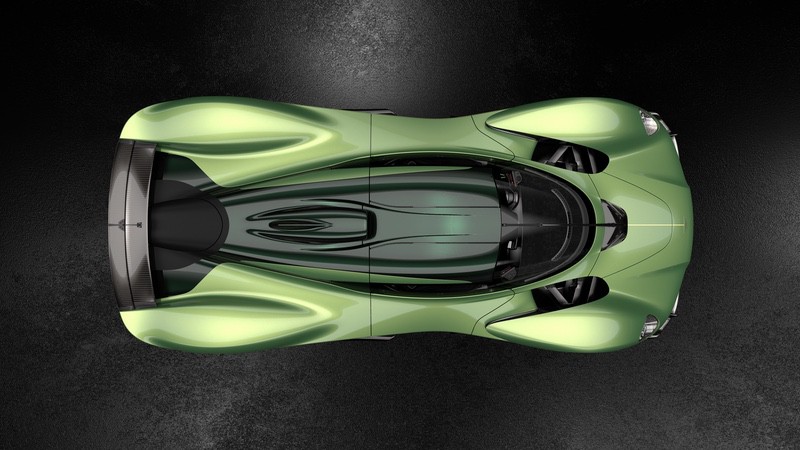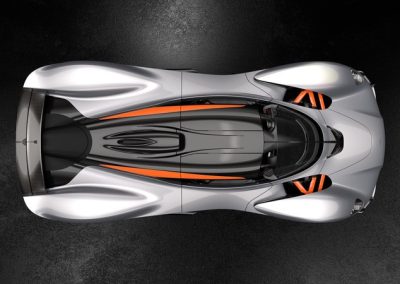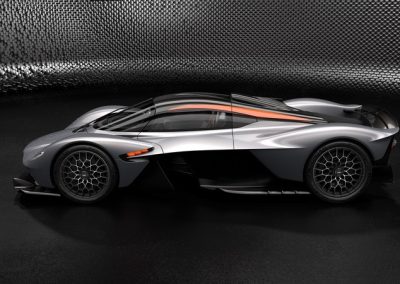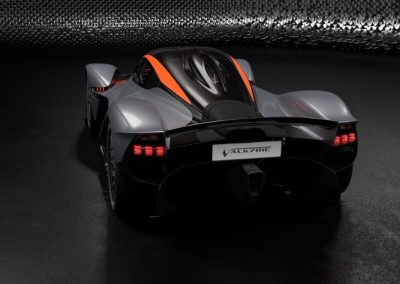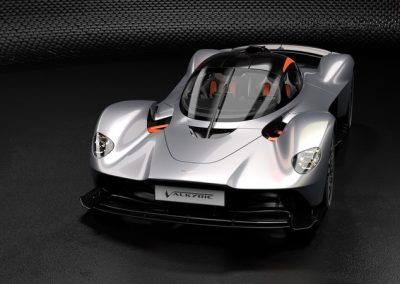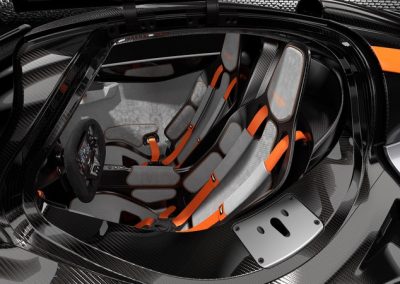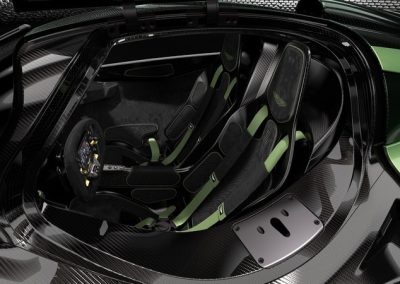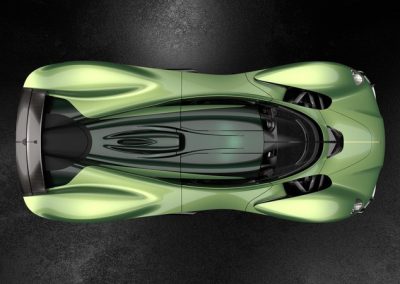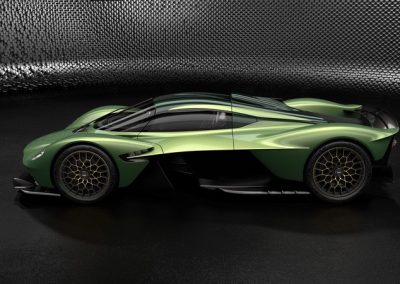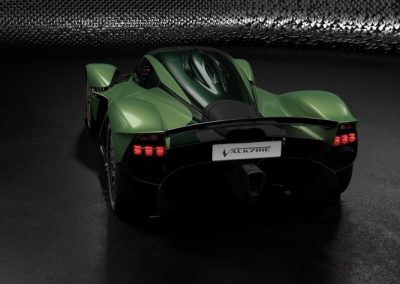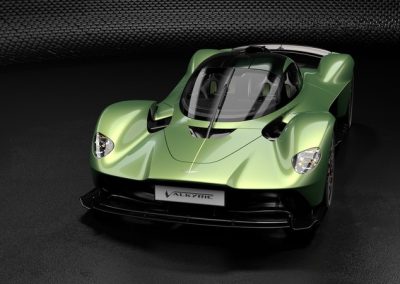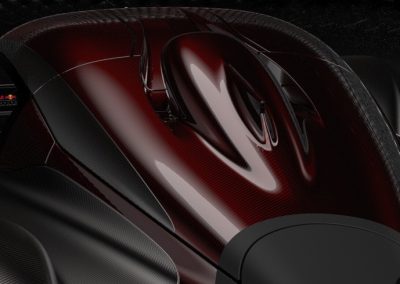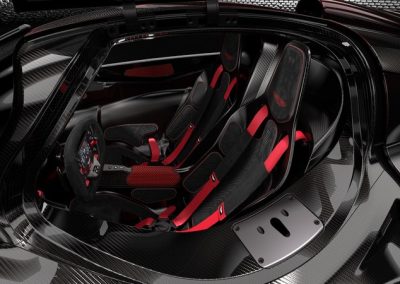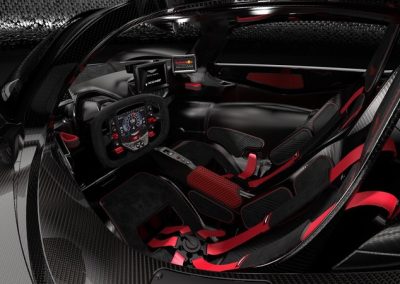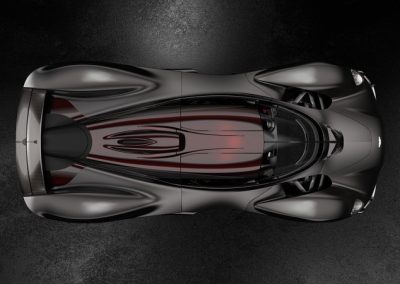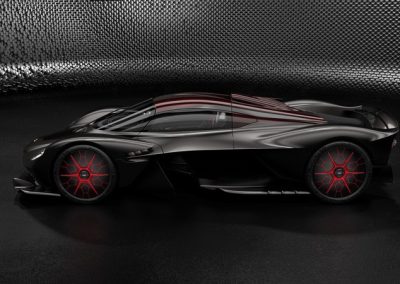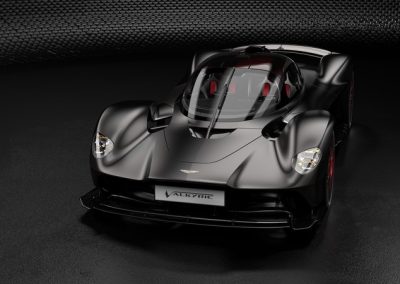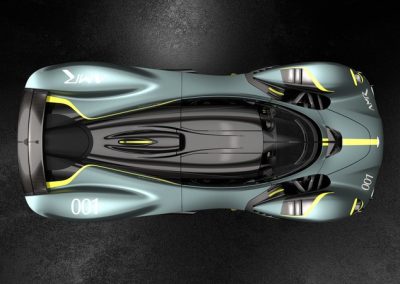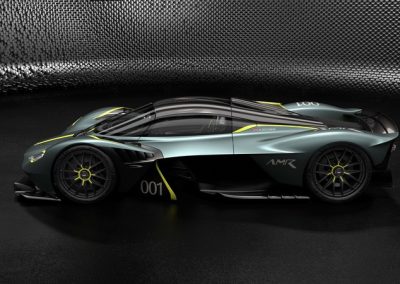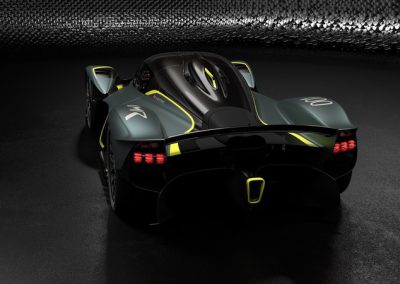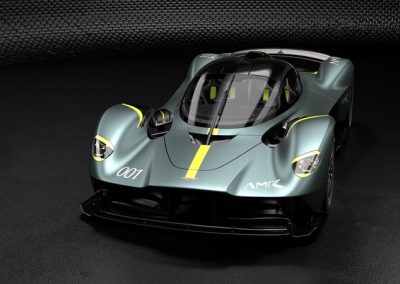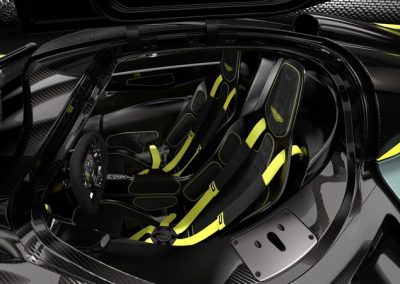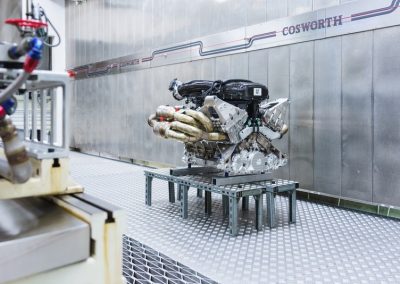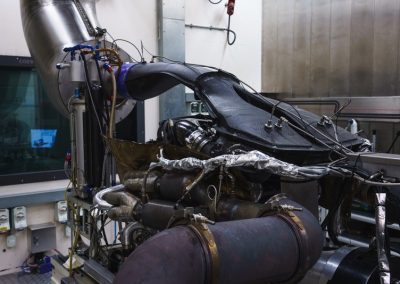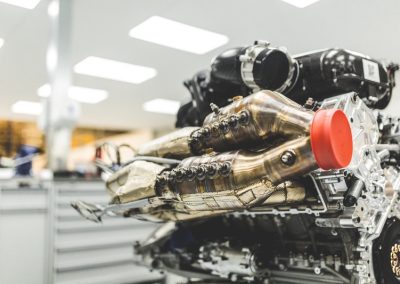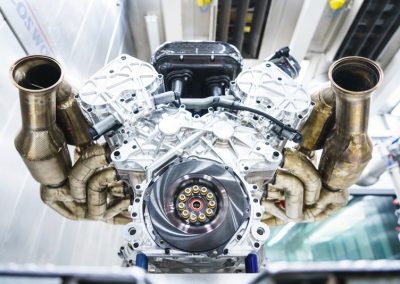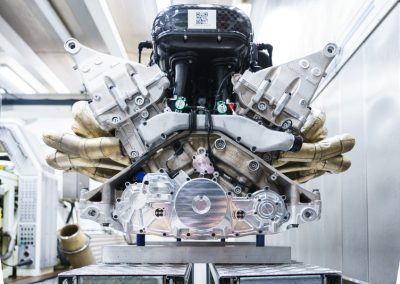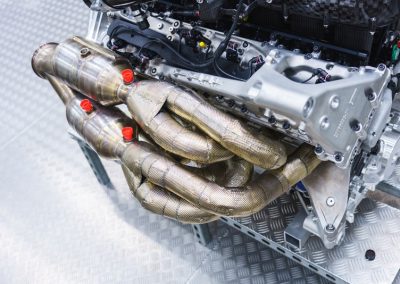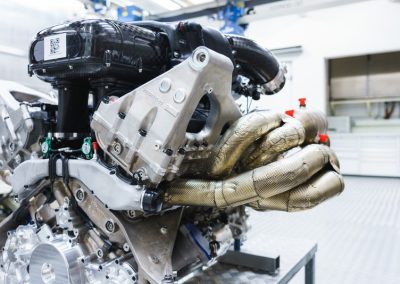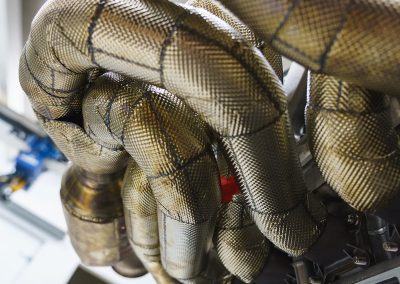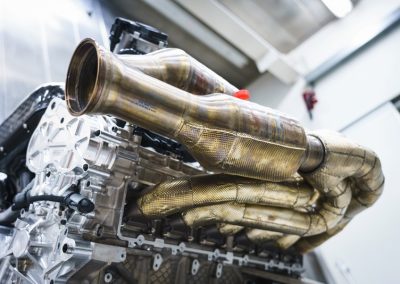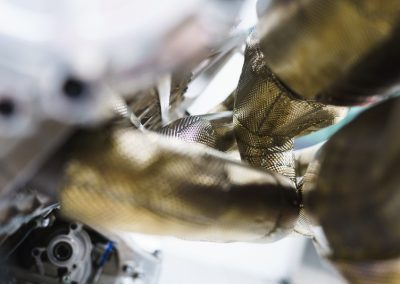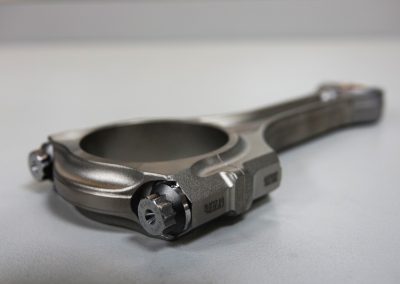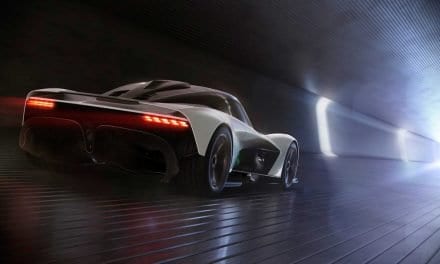Introduction
In the world of hypercars, few names evoke awe quite like the Aston Martin Valkyrie. More than just a car, the Valkyrie is a bold declaration—an F1 car for the road, born from the fever dream of Adrian Newey and brought to life through a historic collaboration between Aston Martin and Red Bull Advanced Technologies. This isn’t just a hypercar; it’s a mechanical tour de force, pushing the limits of design, engineering, and raw ambition.
What sets the Valkyrie apart isn’t just its outrageous looks or its 11,100 rpm redline. It’s the philosophy behind it. Where others chase lap times and luxury, the Valkyrie chases perfection—a pure driving experience that channels motorsport DNA in its rawest form. With a Cosworth-built naturally aspirated V12, a Formula 1-inspired hybrid system, and a carbon-fiber body that slices through the air like a scalpel, the Valkyrie rewrites what it means to be a road car.
In this ultimate guide, we’ll take a deep dive into the Valkyrie’s genesis, its jaw-dropping specs, the obsessive engineering behind it, and what it’s like to live with such a machine—if “living with” is even the right phrase for a car like this. We’ll also explore the track-only AMR Pro variant, examine how the Valkyrie stacks up against other hypercar royalty, and explore its long-term value as an investment-grade collector’s item.
Whether you’re a prospective buyer, a die-hard fan, or just someone who loves absurdly ambitious automotive projects, this guide is your passport into the exhilarating world of Aston Martin’s most radical road car ever built.
Buckle up. Things are about to get loud.

Genesis & Collaboration with Red Bull Racing
The story of the Aston Martin Valkyrie begins not in the boardrooms of Gaydon, but in the mind of Adrian Newey, the genius behind some of the most dominant Formula 1 cars of the modern era. As Chief Technical Officer of Red Bull Racing, Newey had long harbored a fantasy: what if you could build a car that delivered the aerodynamic purity and downforce of an F1 car, but made it legal for the street? That idea became the seed for what would eventually blossom into the Valkyrie.
In 2016, this vision found its perfect partner: Aston Martin. The British marque was eager to elevate its performance credentials beyond the traditional GT realm. Aston’s then-CEO Andy Palmer saw Newey’s concept as the perfect halo project to catapult the brand into the hypercar stratosphere. And so, the unlikely union of a Formula 1 team and a luxury carmaker gave birth to Project Nebula—a codename that couldn’t have been more fitting for such a cosmic leap in automotive thinking.
Red Bull Advanced Technologies handled much of the Valkyrie’s aerodynamics and packaging, with Newey obsessing over every surface, vent, and channel. Meanwhile, Aston Martin contributed its design sensibility and luxury craftsmanship, ensuring the car looked every bit as exotic as it performed. Unlike previous high-performance collaborations that often ended in compromises, this partnership thrived on pushing boundaries. There was no “too far.”
Perhaps the most telling detail of the collaboration is that every component of the Valkyrie was developed from scratch—no shared platforms, no borrowed engines, and definitely no parts-bin raiding. Even the seating position mimics an F1 car, with drivers sitting reclined, feet elevated, and hands gripping a squared-off steering wheel that looks like it was stolen from a Le Mans prototype.
The goal was simple but audacious: to build the fastest road-legal car in the world, one that could lap Silverstone or Spa faster than a GT3 car—and then drive home from the track.
Few cars in history can claim to be true engineering moonshots. The Valkyrie is one of them. And it all started with one man’s dream and two companies crazy enough to chase it.
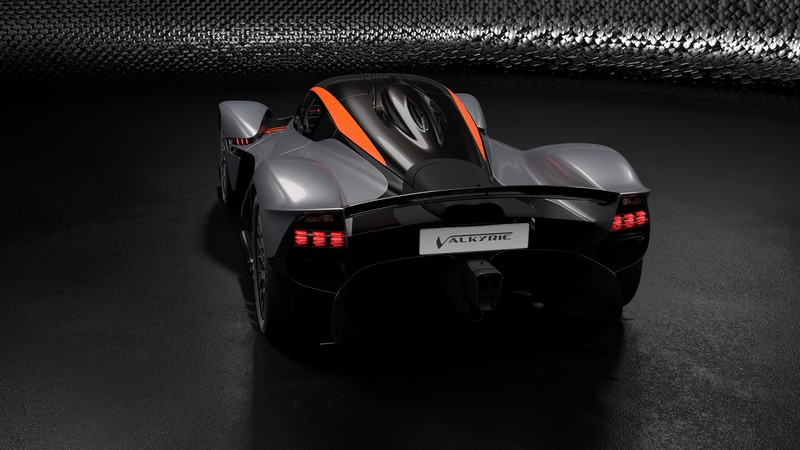
Design Philosophy & Aerodynamics
When it comes to the Aston Martin Valkyrie’s design, “radical” doesn’t even begin to cover it. Every single contour, scoop, and gap serves one unrelenting purpose: aerodynamic supremacy. This is not a car designed for the catwalk — it’s engineered to dominate the racetrack, even if it’s technically road legal. Form doesn’t just follow function here; it worships it.
At first glance, the Valkyrie looks like it belongs in the pit lane of a Le Mans prototype race, not outside Harrods. That’s because legendary F1 aerodynamicist Adrian Newey was given free rein to sculpt the car’s body without the usual compromise of comfort, practicality, or regulations (well… most of them). The result is a shape that appears to have been shaped by wind itself — lean, low, and bristling with active aero components.
🍃 Ground Effect Mastery
The most extreme feature? It’s underneath. The Valkyrie is built around a carbon-fibre monocoque that allows for an enormous Venturi tunnel beneath the floor. This tunnel, combined with a flat underside and ultra-complex diffuser design, sucks the car into the tarmac — creating over 1,800 kg of downforce at speed. To put that into context: that’s more than the car’s own weight. Yes, it can technically drive upside down.
Newey’s obsession with ground effect meant that traditional wings could be minimized. There are still active flaps front and rear that adjust based on speed and braking, but the Valkyrie generates the majority of its grip underneath the body, not on top. This keeps drag low and downforce high — the holy grail of race car design.
💡 Shrinking the Mass
To aid this aero-first philosophy, the Valkyrie is insanely compact. Every component has been miniaturized to fit within the tightest possible package. The headlights? They weigh just 1.5 kg each and are 30–40% lighter than Aston’s next lightest unit. The badges? Chemical-etched onto aluminium just 70 microns thick — thinner than a human hair.
Even the windscreen wiper was a battle. Standard units created too much turbulence, so a single-blade carbon-fibre wiper was developed to avoid ruining airflow over the canopy.
🧪 The F1 Car Illusion
All of this combines to give the Valkyrie an appearance like nothing else on the road. It doesn’t just look like an F1 car — it works like one, too. The open underfloor, central spine, and impossibly narrow cockpit make it feel like you’re staring at a WEC prototype. From a design standpoint, it’s a full rejection of the “supercar” mold.
And yet, there’s beauty here too. Chief Creative Officer Marek Reichman ensured it still carried Aston Martin’s DNA — from the hint of a grille at the nose to the graceful flow of the roofline. But make no mistake: this car is a rolling science experiment in how far design can be pushed when physics is the final judge.

Interior & Driver-Centric Cockpit
Climb into the Aston Martin Valkyrie and you’re not stepping into a car — you’re strapping yourself into a high-tech, carbon-fibre missile. Forget plush seats, cup holders, or infotainment screens. This isn’t a cabin; it’s a cockpit, purpose-built for speed, precision, and the kind of focus usually reserved for astronauts or fighter pilots.
At the heart of it all is the driver’s position. Inspired by Formula 1, your legs are elevated and your back is reclined at an aggressive angle, mimicking the posture of a single-seater racer. You don’t “sit” in the Valkyrie so much as wear it. The seats are directly moulded into the carbon tub, making every bump and vibration feel like a conversation with the car itself.
Minimalism, Redefined
The cabin is stripped down to the bare essentials, and yet it’s anything but crude. Instead of traditional gauges or a digital cluster buried behind a bulky dashboard, you get a rectangular screen embedded directly into the steering wheel — much like what you’d find in a Le Mans prototype. It displays everything from gear selection to telemetry, all within your line of sight. Aston Martin even ditched stalks and buttons in favour of steering wheel-mounted controlsand paddle shifters, reducing driver distractions to near zero.
To eliminate blind spots and drag-inducing side mirrors, the Valkyrie features rear-facing camera pods that beam a live feed into two screens on the A-pillars. This layout doesn’t just aid aerodynamics — it provides a broader, safer field of vision. And with the engine screaming just inches behind your head, you’re going to want to know what’s coming up quickly in the rearview.
High-Tech Meets Handcrafted
Despite its race-car brutality, Aston Martin couldn’t resist a few touches of craftsmanship. The carbon-fibre surfaces are beautifully finished, and bespoke trim options are available for those who want their £2.5 million spaceship to match their watch strap or yacht. But make no mistake: every gram counts. Even adding leather to the seats requires a conversation about weight trade-offs.
It’s also astonishingly tight in there. With a canopy-style roof and minimalist structure, entry and exit require flexibility, grace, and possibly yoga training. But once you’re in, you become one with the machine — and that’s the entire point.
The Valkyrie’s interior isn’t about luxury. It’s about total immersion in speed. And in that regard, it might just be the most focused road car ever created.
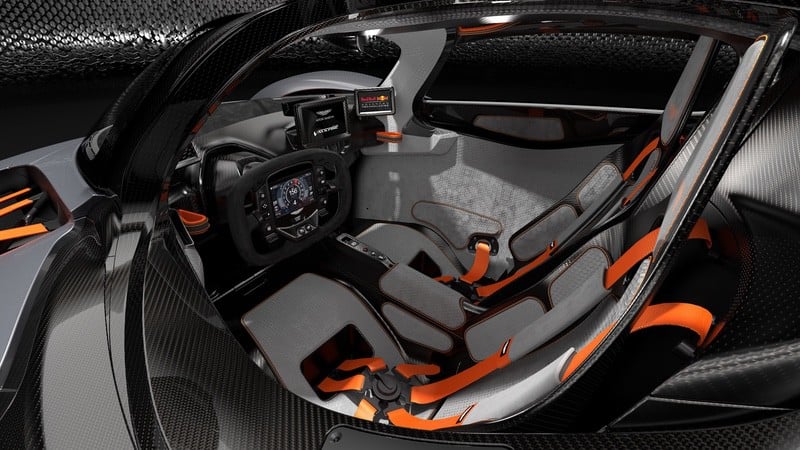
Powertrain & Engineering Marvel
If the Aston Martin Valkyrie were a rock band, the Cosworth-built V12 would be its frontman — wild, unapologetic, and hitting notes that seem physically impossible. At the core of the Valkyrie lies one of the most astonishing internal combustion engines ever built: a 6.5-litre naturally aspirated V12 capable of screaming all the way to 11,100 rpm. Let that sink in.
This engine isn’t turbocharged. It doesn’t rely on forced induction to make its power. Instead, it achieves its superhuman performance the old-school way — through high revs, exquisite engineering, and weight reduction so obsessive that even individual bolts were scrutinised. The result? 1,000 hp from the V12 alone — and that’s before the hybrid system kicks in.
The Hybrid System: KERS for the Street
To push performance even further, the Valkyrie is equipped with a hybrid-electric system developed with Rimac and Integral Powertrain. It functions similarly to a Kinetic Energy Recovery System (KERS) in Formula 1, harvesting energy during braking and redeploying it to boost acceleration.
The system contributes an extra 160 hp, bringing total system output to a staggering 1,160 hp and 900 Nm of torque. This is no eco-hybrid — it’s a performance-boosting electric punch that sharpens throttle response and helps launch the car like a guided missile.
And here’s the kicker: despite all that power, the Valkyrie weighs just over 1,000 kg dry. That’s a better power-to-weight ratio than an F1 car — and the Valkyrie has headlights, number plates, and indicators.
The Transmission & Chassis Setup
Power is sent to the rear wheels via a seven-speed, single-clutch, automated manual gearbox. Unlike dual-clutch systems that add weight and complexity, this transmission was chosen specifically for its lightness and responsiveness— keeping the experience raw and immediate.
The chassis is equally radical. The Valkyrie uses a full carbon-fibre monocoque developed by Multimatic (yes, the same company behind the Ford GT), which integrates the suspension and engine as stress-bearing elements. The inboard pushrod suspension setup uses torsion bars and adaptive dampers, all tuned to respond like a race car, not a road car.
This interconnected, featherweight setup gives the Valkyrie incredible rigidity, scalpel-sharp handling, and the kind of feedback that modern cars often filter out. It’s not just fast in a straight line — it’s engineered to devour corners at g-forces few humans will ever experience.
The Soundtrack of the Gods
And then there’s the noise. That high-revving V12 doesn’t whisper — it howls. It shrieks. It sings in a tone so pure and otherworldly that many owners have said it’s their favourite part of the car. It’s mechanical theatre at its finest, and proof that the internal combustion engine still has a few tricks left.
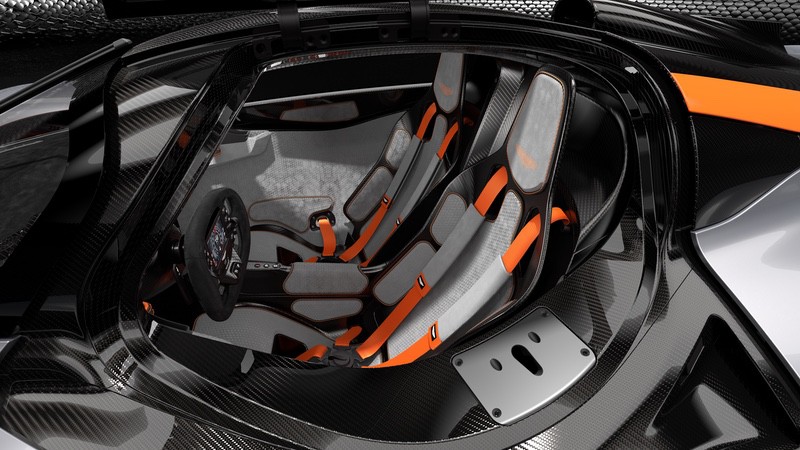
Performance: Numbers That Seem Unreal
When Aston Martin promised that the Valkyrie would be a Formula 1 car for the road, they weren’t exaggerating. The performance figures are so extreme they almost feel fictional — until you realise this car isn’t built to compete with other hypercars. It’s built to obliterate them.
Let’s start with acceleration. Officially, Aston Martin has been a little coy about precise 0–60 mph or 0–100 km/h times, but insiders and test drivers report figures around 2.5 seconds or less. That puts it in the same category as full-electric monsters like the Rimac Nevera — except the Valkyrie does it with a screaming V12 and rear-wheel drive. It’s a miracle of traction, balance, and sheer engineering wizardry.
Top Speed & Lap Times
Top speed? An estimated 250 mph (402 km/h). While that’s not quite Bugatti Chiron territory in a straight line, the Valkyrie wasn’t designed just for drag races on autobahns — it was designed to dominate on a circuit. The real flex isn’t how fast it goes in a straight line, but how fast it goes around corners.
Although Aston Martin has never officially released a Nürburgring lap time, rumours suggest that the Valkyrie could be the first road car to lap the Nordschleife in under 6 minutes. If proven, that would be a staggering achievement, placing it ahead of everything that’s ever worn number plates — including the AMG One, Porsche 911 GT2 RS MR, and the Lamborghini Aventador SVJ.
Downforce and G-Force
Much of this performance is thanks to its F1-grade aerodynamics. The Valkyrie generates over 1,800 kg of downforceat high speeds — more than its own weight — meaning it could theoretically drive upside down in a tunnel if it had the tyres and courage (though please, don’t test this at home).
Cornering grip is measured in absurd g-forces, estimated at well over 3.0g in lateral acceleration under peak conditions. Braking is equally savage thanks to a Brembo carbon-carbon brake system — derived straight from Formula 1 — allowing it to scrub off speed with neck-snapping violence.
Not Just Numbers — How It Feels
But it’s not just raw stats. The Valkyrie’s party trick is how it delivers this performance. It’s visceral. The steering chatters with feedback, the suspension communicates every nuance of the surface, and the V12 noise fills the cockpit like a symphony of chaos.
Drivers who’ve been lucky enough to get behind the wheel say it reprograms your senses, recalibrates your understanding of what’s possible in a road-legal car, and makes even the most capable supercars feel… slow.
In a world of electric torque and one-pedal driving, the Valkyrie is an analog deity, dialled up to eleven, and clad in carbon-fibre armour.
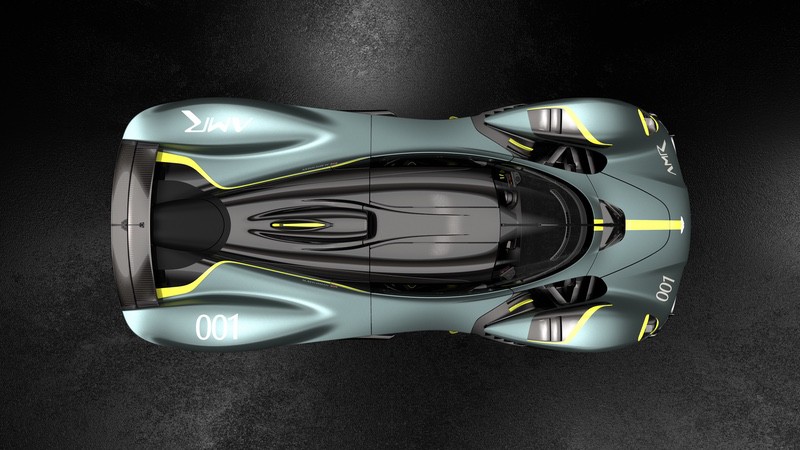
Valkyrie AMR Pro – The Track Monster
If the standard Valkyrie is Aston Martin’s answer to the question, “How close can we get to an F1 car on the road?”, then the Valkyrie AMR Pro answers a very different question: “What happens when we stop caring about the road altogether?”
The AMR Pro is the purest expression of Adrian Newey’s original vision — unshackled from number plates, headlights, or any kind of concession to public roads or emissions regulations. It’s the Valkyrie’s evil twin: louder, lighter, faster, and entirely unapologetic.
Engineered for the Edge
At its core, the AMR Pro retains the 6.5L naturally aspirated Cosworth V12, but here’s the twist — the hybrid system has been removed. Why? Because the electric system adds weight, complexity, and doesn’t offer enough benefit on a track where the V12 already shines. The result is a car that’s even lighter than the road version — with a dry weight rumored to be under 1,000 kg.
It revs to the same ridiculous 11,100 rpm, still produces around 1,000 hp, and thanks to its diet, the AMR Pro actually feels quicker in the corners than its hybrid sibling. It’s tuned to run on E85 racing fuel, and comes with a bespoke race gearbox and gear ratios optimized for circuit use.
Aero Unleashed
One glance at the AMR Pro and you’ll spot the differences instantly. The front and rear tracks are wider, the body is longer, and the aerodynamics are even more extreme. That already bonkers underfloor Venturi system? It’s been pushed further. The AMR Pro generates a truly absurd 2,500 kg of downforce — enough to crush lesser cars under its own grip.
Without the need to comply with crash safety for public roads, the AMR Pro also benefits from massive weight savingsin the chassis, windows (polycarbonate), and suspension. Even the wheels are made from ultralight magnesium.
Performance Goals: Lap Times of Legends
Aston Martin claims the AMR Pro is capable of lapping Le Mans faster than an LMP1 car, which puts it in the performance realm of the 2021 Toyota GR010 Hybrid — a machine purpose-built for endurance racing. Let that sink in: this is a customer car that can go toe-to-toe with factory Le Mans prototypes.
Owner Experience: An Elite Club
Only 40 units of the Valkyrie AMR Pro are being built, making it even rarer than the road version. Buyers also gain access to exclusive track events, where Aston Martin sets up full pit-lane support, telemetry, and coaching — essentially offering a Formula 1-style experience without ever needing to qualify for the grid.
In short, the AMR Pro is the ultimate garage unicorn. It’s not for road trips. It’s not for Sunday drives. It’s for rewriting the limits of what a track-focused machine can be — and giving its owner the closest thing to a private race team outside of professional motorsport.
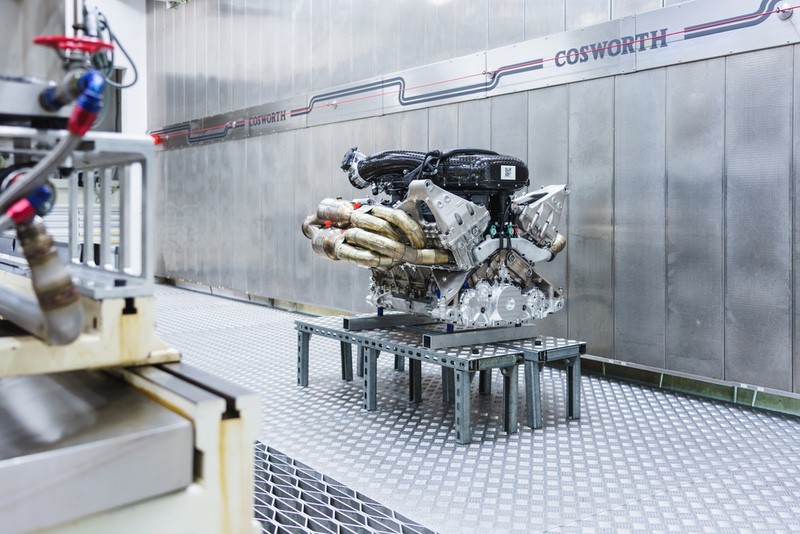
Production, Availability & Price
From the very beginning, Aston Martin made it clear: the Valkyrie would be as rare as it is radical. This wasn’t going to be another high-volume supercar like the Ferrari SF90 or McLaren Artura. No — the Valkyrie was always meant to be a limited-run masterpiece, and that exclusivity is a big part of its appeal.
Limited Numbers, Maximum Hype
Production of the road-going Valkyrie was capped at just 150 units worldwide. That’s fewer than most special edition Ferraris, and on par with ultra-rare icons like the McLaren P1 GTR or the LaFerrari Aperta. On top of that, Aston also produced 85 additional chassis, split between the Valkyrie AMR Pro (40 units) and a handful of prototypes and development cars.
This tight cap ensures that the Valkyrie stays rare — and in the world of collector hypercars, rarity equals value.
A Price Tag to Match the Madness
When Aston Martin opened the order books, the base price of the Valkyrie was around £2.5 million (approx. $3.2 million USD) — and that’s before options, taxes, and customisation. In reality, most buyers spent closer to £3 million or more once they dipped into the bespoke programme and commissioned liveries, interiors, or matching watches and luggage.
And if you’re wondering: no, you can’t just buy one now. Every car was sold out long before production began, and many were allocated only to top-tier Aston Martin clients or collectors with established histories. Think: multi-Aston garages, previous One-77 or Vulcan owners, or people with the kind of bank accounts that don’t blink at a seven-figure invoice.
Secondary Market Madness
On the resale market, the Valkyrie is already seeing massive premiums, with some examples quietly trading hands for £4–5 million, depending on spec and delivery mileage. As production winds down, values are expected to rise further — especially for cars with unique configurations or early VINs.
For the AMR Pro, it’s even crazier. With only 40 cars made and track-only bragging rights, these rarely come up for sale. When they do, expect auction house fireworks — especially as more collectors seek hypercars that push engineering boundaries without compromises.
Deliveries & Delays
Deliveries began in late 2021, but the road has not been smooth. Like many low-volume hypercar projects, the Valkyrie faced production delays due to complex engineering, quality control, and, of course, global supply chain issues. Some customers waited over three years from deposit to delivery.
That said, those who’ve taken delivery report that the experience is like nothing else on earth. It’s not just a car — it’s an event.

Ownership & Daily Use (or Lack Thereof)
Let’s get one thing straight: the Aston Martin Valkyrie is not a daily driver. You don’t take it to the shops. You don’t valet it outside a fancy restaurant. And you definitely don’t leave it parked on a street, even for a minute. Owning a Valkyrie is less about utility and more about curating an experience—a rare, high-octane ritual.
Can You Actually Drive It on the Road?
Technically, yes. The Valkyrie is road legal—but just barely. To meet regulations, Aston Martin added number plates, LED lights, rear indicators, and a catalytic converter to help it squeak under emissions limits. But calling it “road friendly” would be generous.
It rides extremely low, the turning circle is laughable, and visibility is, shall we say, “track-optimised.” Driving it through a city is like trying to pilot a fighter jet through a shopping mall. You can do it—but it’s not enjoyable, and neither you nor the car will be happy about it.
Still, a few brave owners have taken theirs on spirited road drives, and reports describe it as pure theatre: onlookers gasp, windows shake, and even supercar veterans stop to stare. The Valkyrie doesn’t blend in—it bends reality.
Maintenance and Running Costs
Here’s where things get spicy. The Valkyrie doesn’t go to your local dealership for a service. Instead, Aston Martin deploys a dedicated team—often with Red Bull Advanced Technologies involvement—to maintain and support the car. That includes:
-
Custom software updates
-
Specialist tools
-
Trackside support for AMR Pro owners
-
Transport and logistics for events
Servicing is bespoke, and prices are… open to interpretation. Think tens of thousands per year, and that’s before consumables like carbon-carbon brakes or custom-made tyres.
Usability: No Glovebox, No Compromises
There’s no infotainment system. No glovebox. No trunk space. Your luggage stays at the hotel, or preferably, follows behind in a support vehicle. Climate control? Optional. The doors open like fighter jet canopies, and getting in or out requires Cirque du Soleil levels of flexibility.
But to own a Valkyrie is to accept that it exists outside practicality. It’s about theatre, emotion, and an unfiltered connection to the road. This is the kind of car you trailer to an event, take on a closed road run, or store in a climate-controlled garage as part of a curated collection.
Owner Testimonials
Those who own one describe the experience as spiritual. One collector compared it to “owning the Mona Lisa—but with a rev limiter at 11,000 rpm.” Others say it’s more satisfying than any Bugatti or Koenigsegg—not because it’s easier, but because it challenges you in a way modern cars rarely do.
In short, the Valkyrie isn’t just a car. It’s a calling. And you don’t “use” it. You honour it.
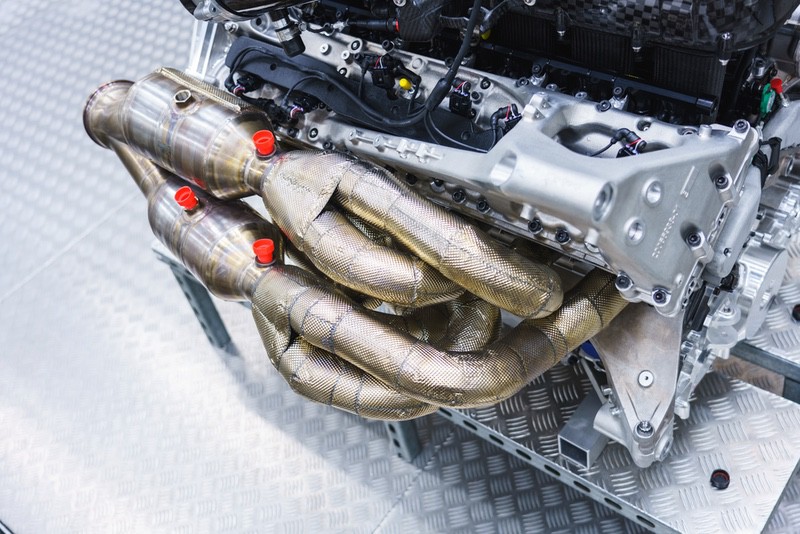
Collector Appeal & Investment Value
In the upper echelon of car collecting, some cars are seen as trophy pieces — rare, valuable, and worth locking away in carbon-sealed garages. Others become legends in their own right, talked about in hushed tones at concours events and traded behind closed doors for eye-watering sums. The Aston Martin Valkyrie, somehow, manages to be both.
A Halo Car Like No Other
The Valkyrie stands tall as the ultimate halo project for Aston Martin — a car designed not to slot into a market segment, but to stand outside it entirely. It’s Aston’s first true hypercar, a model that transcends the brand’s history of grand tourers and track specials. For collectors, that kind of first-mover significance carries huge weight.
Add in the Adrian Newey connection, the Red Bull Racing partnership, the Cosworth V12, and the fact that it rewrote what was mechanically possible in a road car, and you’ve got a historic moment in car-building bottled into 150 examples.
Rarity & Exclusivity
With only 150 road cars and 40 AMR Pro variants, the Valkyrie is rarer than the LaFerrari, McLaren P1, and Porsche 918 Spyder — the “Holy Trinity” of modern hypercars. Even more critically, Aston Martin was extremely selective about who could purchase one. Buyers needed to be long-standing clients, highly visible brand ambassadors, or repeat customers with a solid collection history.
That means the cars are now tightly held, often tucked into long-term collections and rarely listed publicly. When they are, values are strong — with some cars already fetching between £4 million and £5 million, especially for early production VINs or bespoke specifications.
Why It’s a Strong Long-Term Bet
The Valkyrie checks all the right investment boxes:
-
Limited production
-
Technical innovation
-
Legendary collaborators
-
No direct successor (nothing else like it in Aston’s pipeline)
-
Naturally aspirated engine in a hybrid era
-
Analog driving experience in an increasingly digital world
And most importantly? It’s awe-inspiringly insane. Collectors love a car that tells a story, that creates myths and buzz — and the Valkyrie does that without even turning a wheel.
The AMR Pro Effect
For investors and collectors with a racing bent, the AMR Pro offers even greater exclusivity and mystique. With just 40 units, no road legality, and track-only status, it becomes the kind of car that anchors a collection — a modern-day equivalent of the Ferrari FXX K or McLaren P1 GTR.
And because the AMR Pro is tied to Aston Martin’s future track programmes and exclusive events, ownership becomes an experience, not just a transaction — which further fuels demand.
Risks? What Risks?
Sure, any market can shift. But the Valkyrie is so far outside the mainstream that it’s insulated from economic turbulence. It’s not just a car; it’s a crown jewel. And as the world moves toward electrification, this screaming V12 unicorn may one day be seen as the last great mechanical hypercar.

Aston Martin Valkyrie vs Rivals
In the world of hypercars, comparisons are inevitable — especially when you’ve got a machine as radical as the Valkyrie. But how does it really stack up against the competition? The answer is complex because the Valkyrie doesn’t just rival other hypercars — it redefines what a hypercar even is.
Let’s take a look at how it compares to some of its most high-profile rivals:
🆚 Mercedes-AMG ONE
-
Concept: A literal F1 car for the road, featuring a detuned 1.6L turbo hybrid V6 derived directly from Mercedes’ championship-winning Formula 1 engine.
-
Power: ~1,049 hp (with four electric motors)
-
Top Speed: ~219 mph
-
Edge: Actual F1 tech and AWD system.
-
Drawback: Heavier, more complex, and rev-limited to 11,000 rpm with considerable hybrid lag.
Valkyrie Verdict: The AMG ONE is clever. The Valkyrie is mad — and often that’s what collectors want. Plus, it sounds far better.
🆚 Ferrari SF90 Stradale / XX
-
Concept: Ferrari’s plug-in hybrid with AWD and twin-turbo V8 backed by three electric motors.
-
Power: ~1,000 hp (SF90), 1,030+ hp (SF90 XX)
-
Top Speed: ~211 mph
-
Edge: Ferrari engineering and usability; daily-drivable.
-
Drawback: Mass production compared to Valkyrie’s exclusivity. Also heavier and more comfort-focused.
Valkyrie Verdict: The SF90 is brilliant, but it’s a Ferrari you could live with. The Valkyrie is a Ferrari you fantasise about but could never tame.
🆚 McLaren Speedtail
-
Concept: An ultra-fast GT with a futuristic aesthetic and three-seat layout (a nod to the McLaren F1).
-
Power: ~1,036 hp (hybrid V8)
-
Top Speed: ~250 mph
-
Edge: Streamlined speed king with luxury.
-
Drawback: Less track-focused, more about top-speed elegance than apex hunting.
Valkyrie Verdict: The Speedtail is a spaceship; the Valkyrie is a fighter jet. Completely different missions.
🆚 Koenigsegg Jesko Absolut / Attack
-
Concept: The most advanced Koenigsegg to date — either for top speed (Absolut) or track performance (Attack).
-
Power: ~1,600 hp (on E85)
-
Top Speed: Theoretically 300+ mph
-
Edge: Koenigsegg’s in-house innovation: Light Speed Transmission, flex-fuel engine, active aero.
-
Drawback: More digital, less analog — and harder to relate to emotionally.
Valkyrie Verdict: The Jesko is a numbers weapon. The Valkyrie is an emotional experience with F1 soul.
🆚 Pagani Huayra R
-
Concept: Pagani’s most extreme track-only creation, powered by a bespoke naturally aspirated V12.
-
Power: ~850 hp
-
Top Speed: ~238 mph
-
Edge: Artisan craftsmanship, soundtrack, extreme rarity.
-
Drawback: Not road legal. Lower performance ceiling than Valkyrie AMR Pro.
Valkyrie Verdict: Pagani is art. Valkyrie is engineering fury. Both are collectable — the Valkyrie is more brutal.
Summary Table:
| Rival | Power (hp) | Road Legal | Top Speed | Production Volume | Key Advantage |
|---|---|---|---|---|---|
| Mercedes-AMG ONE | ~1,049 | ✅ | ~219 mph | 275 units | Real F1 tech |
| Ferrari SF90 XX | ~1,030 | ✅ | ~211 mph | ~799 units | Ferrari badge, AWD usability |
| McLaren Speedtail | ~1,036 | ✅ | ~250 mph | 106 units | Top speed + McLaren comfort |
| Koenigsegg Jesko | ~1,600 | ✅ | ~300+ mph | ~125 units | Most innovative tech in class |
| Pagani Huayra R | ~850 | ❌ | ~238 mph | 30 units | Artistry, rarity |
| Aston Valkyrie | 1,160 | ✅ | ~250 mph | 150 road / 40 AMR Pro | Purest F1-style analog hypercar |
Final Verdict:
While other hypercars impress with numbers, luxury, or usability, the Valkyrie intimidates. It’s not the most refined, nor the most versatile — but it might be the most thrilling, the most emotional, and arguably the most important hypercar of its era.
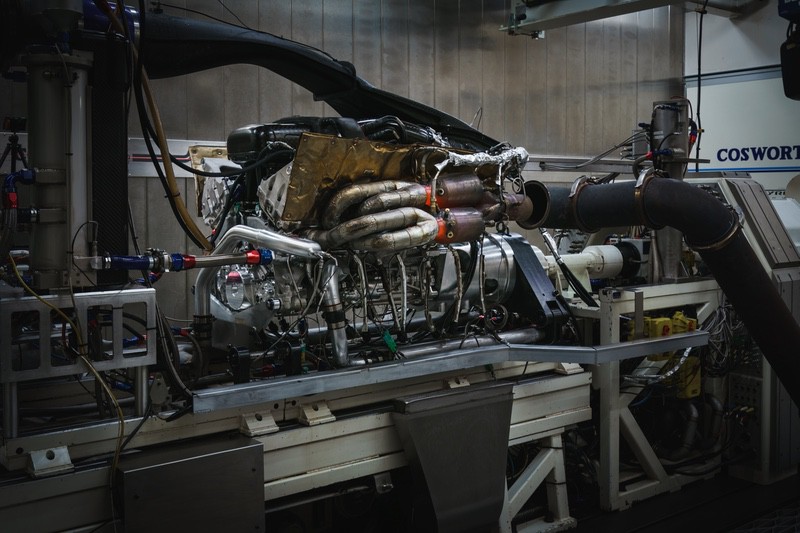
Conclusion
The Aston Martin Valkyrie is not just a car. It’s a statement. A rebellion. A bold, glorious middle finger to compromise. In an era of increasing regulation, downsizing, turbocharging, and electrification, Aston Martin and Red Bull Racing dared to ask, what if we went the other way? What if we cranked the volume to 11, removed the comfort, doubled the downforce, and brought a race car straight to the street?
The result is one of the most ambitious and unhinged vehicles ever to wear a number plate. The Valkyrie doesn’t try to blend in or appeal to all tastes — it’s not built for the masses, the mainstream, or the mall parking lot. It’s built to exist at the outer limits of physics, to tear up tarmac and turn heads into swivels.
From its howling Cosworth V12 that sings at 11,000 rpm, to the uncompromising aerodynamics sculpted by Adrian Newey, and a cockpit so focused it might as well come with a G-suit, the Valkyrie is an engineering masterclass wrapped in carbon and fury.
But perhaps most importantly, it’s a love letter. A love letter to motorsport. To mechanical purity. To the kind of passion that can’t be measured in fuel economy or touchscreen size. It’s what happens when the rulebook is ignored, the accountants are told to wait outside, and the engineers are let loose with a blank cheque.
For collectors, it’s a once-in-a-lifetime icon. For enthusiasts, it’s proof that the spirit of driving is still alive, roaring and defiant. And for Aston Martin, it’s a legacy project that will echo through automotive history for decades.
So whether you’re dreaming, drooling, or (if you’re lucky) waiting for delivery, one thing is clear: the Valkyrie isn’t just Aston Martin’s greatest creation — it’s one of the greatest cars ever made.

Frequently Asked Questions (FAQ)
How many Aston Martin Valkyries were made?
Aston Martin produced just 150 road-going Valkyries, along with 40 track-only Valkyrie AMR Pro units. Additionally, a handful of development and prototype cars were built, bringing the total production run to under 200 vehicles. This extreme rarity makes it one of the most exclusive hypercars ever produced.
How much does the Aston Martin Valkyrie cost?
The original base price was around £2.5 million ($3.2 million USD). However, most buyers opted for bespoke specifications, pushing the real-world cost to well over £3 million. On the secondary market, examples have already sold for £4–5 million, depending on spec and mileage.
Is the Aston Martin Valkyrie road legal?
Yes — the standard Valkyrie is fully road legal. Aston Martin made significant adjustments to meet global regulations, including the addition of number plates, lighting systems, emissions compliance, and safety features. That said, it’s a very extreme road car, and driving it on public roads is a serious undertaking.
What is the top speed of the Valkyrie?
The Valkyrie is capable of reaching a top speed of approximately 250 mph (402 km/h). However, it’s designed more for downforce and circuit performance than outright straight-line speed, meaning its real advantage lies in cornering grip and lap times.
How fast is the Valkyrie from 0–60 mph?
While official 0–60 mph figures have not been published, real-world estimates suggest under 2.5 seconds. Its lightweight construction, hybrid boost, and rear-wheel drive make it incredibly quick off the line — especially considering it lacks all-wheel-drive assistance.
What powers the Aston Martin Valkyrie?
The Valkyrie features a 6.5L naturally aspirated V12 developed by Cosworth, producing 1,000 hp on its own. This is paired with a hybrid-electric system that adds another 160 hp, for a combined total of 1,160 hp and 900 Nm of torque.
What’s the difference between the Valkyrie and the Valkyrie AMR Pro?
The Valkyrie AMR Pro is a track-only version that drops the hybrid system, features wider bodywork, increased downforce, a revised chassis, and runs on racing fuel. It weighs less than the road car and is expected to deliver lap times comparable to Le Mans LMP1 race cars. Only 40 units of the AMR Pro were built.
Can I still buy a Valkyrie today?
All new Valkyrie units were sold out years ago, with production now nearing completion. However, some examples occasionally surface on the secondary market, often commanding massive premiums. Interested buyers should work through hypercar brokers, auction houses, or elite collectors.
Is the Valkyrie a good investment?
From a collector’s perspective, yes. The Valkyrie’s limited production, F1-derived engineering, and naturally aspirated V12 make it one of the most desirable and significant hypercars of its era. Values have already appreciated, and many expect the Valkyrie to become a future classic.


